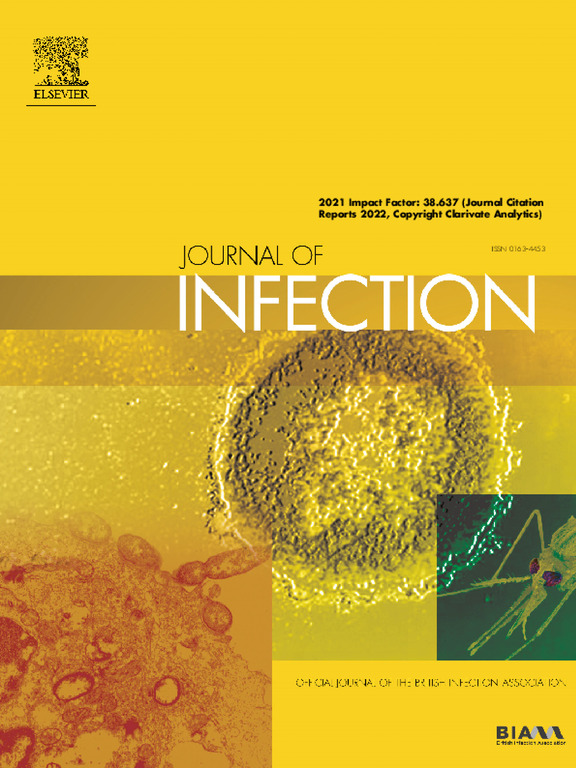High-dose versus standard-dose influenza vaccine for immunocompromised patients: A systematic review and meta-analysis of randomised clinical trials
IF 11.9
1区 医学
Q1 INFECTIOUS DISEASES
引用次数: 0
Abstract
Background
Immunocompromised patients present a higher risk of severe influenza disease and respond worse to vaccination.
Objective
We aimed to assess immunogenicity and safety of high-dose vs. standard-dose influenza vaccine in immunocompromised patients.
Data source
A search was conducted in Medline, Web of Science, Scopus and ClinicalTrials.gov from inception to March 2024 with no other restrictions.
Study eligibility
Randomised clinical trials reporting immunogenicity or safety of high-dose versus standard-dose influenza vaccine in immunocompromised patients were included.
Methods
The protocol was prospectively registered (PROSPERO ID: CRD42023466202). A meta-analysis was conducted using random-effects models. Heterogeneity was assessed through I2 statistic. Subgroup analyses were conducted, and publication bias was assessed through funnel plots and Egger’s tests.
Results
A total of 21 analyses from 16 randomised clinical trials were included. Regarding immunogenicity (including 1862 patients), high-dose influenza vaccine showed higher geometric mean titre of hemagglutination inhibition and higher seroconversion rates for all strains (RR=1.30, 95%CI:1.04–1.57, I2=45.0% for H1N1; RR=1.22, 95%CI:1.03–1.41, I2=39.5% for H3N2; RR=1.39, 95%CI:1.15–1.63, I2=18.1% for B). These findings were reinforced in studies with higher methodological quality and higher sample sizes. Regarding safety (including 1403 patients), there were no differences in reported adverse events except for pain, higher in the high-dose influenza vaccine group (RR=1.29, 95%CI:1.04–1.54). Although high-dose influenza vaccine showed less frequency of clinical outcomes, data were not conclusive as few studies analysed clinical effectiveness.
Conclusions
High-dose influenza vaccine showed higher immunogenicity and similar safety than standard-dose vaccine and should be recommended for immunocompromised patients. Future larger randomised clinical trials analysing clinical effectiveness are required to provide recommendations for specific immunocompromised populations.
免疫功能低下患者的高剂量与标准剂量流感疫苗:随机临床试验的系统回顾和荟萃分析
免疫功能受损的患者出现严重流感疾病的风险较高,对疫苗接种的反应较差。目的评价高剂量流感疫苗与标准剂量流感疫苗在免疫功能低下患者中的免疫原性和安全性。数据来源检索自成立至2024年3月在Medline、Web of Science、Scopus和ClinicalTrials.gov进行,没有其他限制。研究资格纳入了报告高剂量流感疫苗与标准剂量流感疫苗在免疫功能低下患者中的免疫原性或安全性的随机临床试验。方法前瞻性注册该协议(PROSPERO ID: CRD42023466202)。采用随机效应模型进行meta分析。通过I2统计量评估异质性。进行亚组分析,并通过漏斗图和Egger检验评估发表偏倚。结果共纳入16项随机临床试验的21项分析。在免疫原性方面(包括1862例患者),高剂量流感疫苗对所有菌株均表现出更高的血凝抑制几何平均滴度和更高的血清转化率(RR=1.30, 95%CI: 1.04-1.57, H1N1的I2=45.0%;H3N2组RR=1.22, 95%CI:1.03 ~ 1.41, I2=39.5%;RR=1.39, 95%CI:1.15 ~ 1.63, I2=18.1%。这些发现在更高方法学质量和更大样本量的研究中得到了加强。在安全性方面(包括1403例患者),除了疼痛外,报告的不良事件没有差异,高剂量流感疫苗组的不良事件更高(RR=1.29, 95%CI: 1.04-1.54)。虽然高剂量流感疫苗显示临床结果的频率较低,但由于很少有研究分析临床有效性,因此数据并不具有结论性。结论高剂量流感疫苗具有较高的免疫原性,且安全性与标准剂量疫苗相当,应推荐免疫功能低下患者接种。未来需要更大规模的随机临床试验来分析临床有效性,为特定免疫功能低下人群提供建议。
本文章由计算机程序翻译,如有差异,请以英文原文为准。
求助全文
约1分钟内获得全文
求助全文
来源期刊

Journal of Infection
医学-传染病学
CiteScore
45.90
自引率
3.20%
发文量
475
审稿时长
16 days
期刊介绍:
The Journal of Infection publishes original papers on all aspects of infection - clinical, microbiological and epidemiological. The Journal seeks to bring together knowledge from all specialties involved in infection research and clinical practice, and present the best work in the ever-changing field of infection.
Each issue brings you Editorials that describe current or controversial topics of interest, high quality Reviews to keep you in touch with the latest developments in specific fields of interest, an Epidemiology section reporting studies in the hospital and the general community, and a lively correspondence section.
 求助内容:
求助内容: 应助结果提醒方式:
应助结果提醒方式:


